Images Of Jupiter Taken By JunoCam On NASA’s Juno Spacecraft.
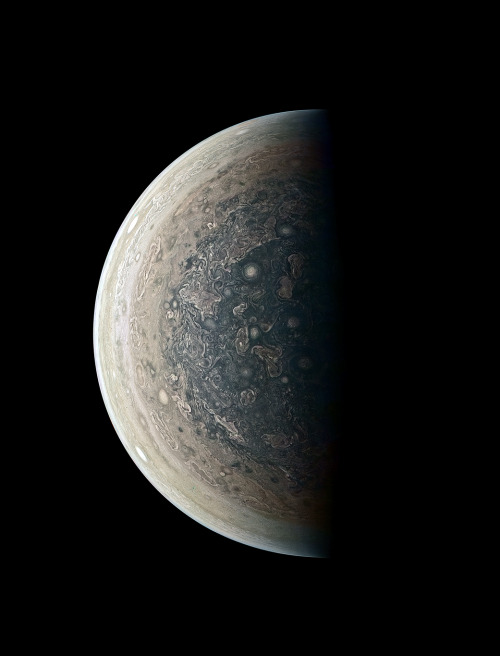
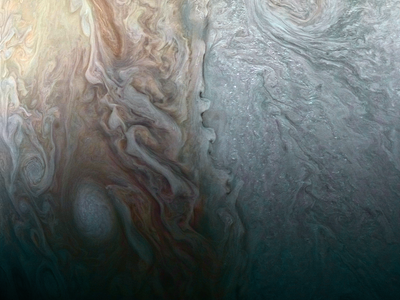



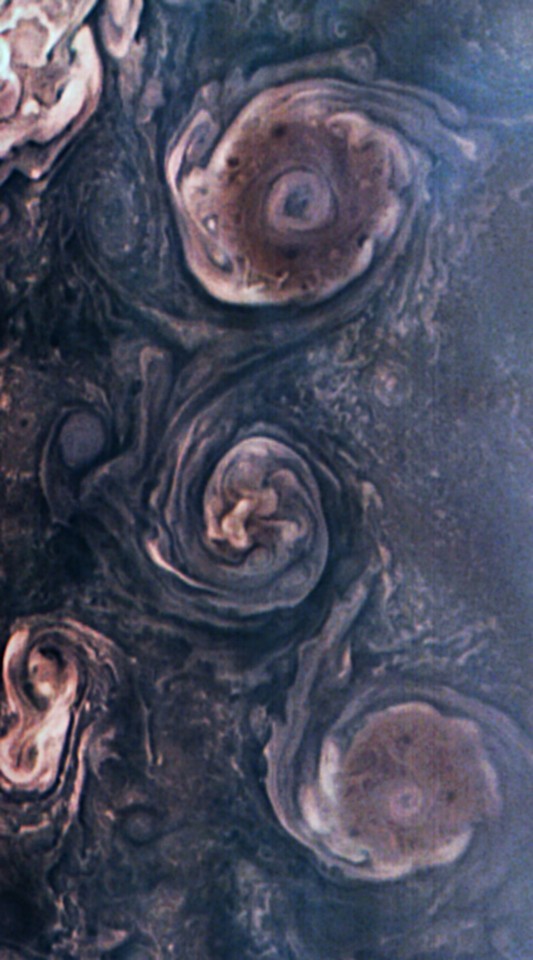



Images of Jupiter taken by JunoCam on NASA’s Juno spacecraft.
Credit: NASA, JPL-Caltech, Mission Juno, Jason Major, Luca Fornaciari, Gerald Eichstädt
More Posts from Starry-shores and Others
Eclipsing Suns
I can’t remember which novel JR said influenced the world of S6, but I was recently reminded of Asimov’s Nightfall and wonder whether its eclipse narrative might have some bearing on the plot …
[Spoilers for Nightfall ahead – highly recommend you read the story (it’s short!)]
For anyone not familiar, Nightfall is set on a planet with six suns - enough suns that the planet never experiences darkness. Every 2000 years or so, the suns and the planet’s moon align just so, and an eclipse occurs. And every 2000 years, something cataclysmic occurs that ends civilization. The only records of the event are embedded in the mythology of an ancient cult’s scripture.
During one of these cycles, a team of astronomers and psychologists collaborate with the cult, and together determine that they are weeks away from the next eclipse. The scientists lock their loved ones away in a bunker and prepare equipment to document the eclipse, which they do not believe they will survive. (Having never experienced nighttime, they have a pathological fear of the dark. Even more concerning, however, is the threat of the Stars mentioned in ancient scripture, for these have the power to burn cities and drive men to madness.)
And when the eclipse occurs and people see the night sky for the first time in two thousand years, they are struck with terror and knowledge of their insignificance, and all the world over, people set their cities on fire to blot out the stars’ truth and the horror of the long night.
… What little we do know about S6 reminds me of this. Like Clarke and co., these scientists attempt to learn what happened to a lost civilization (Eligius III) while hampered by a cult-like organization (Second Dawn? Wonkru? Whoever now inhabits the planet?) that has attached mythological meaning to the natural phenomenon of the eclipse. JR has said that something crucial happens when the suns eclipse, and though suns eclipsing themselves does not create total darkness, as here, we can guess that there will be psychological ramifications attached to it.

Stars
Stars are the most widely recognized astronomical objects, and represent the most fundamental building blocks of galaxies. The age, distribution, and composition of the stars in a galaxy trace the history, dynamics, and evolution of that galaxy. Moreover, stars are responsible for the manufacture and distribution of heavy elements such as carbon, nitrogen, and oxygen, and their characteristics are intimately tied to the characteristics of the planetary systems that may coalesce about them. Consequently, the study of the birth, life, and death of stars is central to the field of astronomy.
How do stars form?
Stars are born within the clouds of dust and scattered throughout most galaxies. A familiar example of such as a dust cloud is the Orion Nebula.

Turbulence deep within these clouds gives rise to knots with sufficient mass that the gas and dust can begin to collapse under its own gravitational attraction. As the cloud collapses, the material at the center begins to heat up. Known as a protostar, it is this hot core at the heart of the collapsing cloud that will one day become a star.

Three-dimensional computer models of star formation predict that the spinning clouds of collapsing gas and dust may break up into two or three blobs; this would explain why the majority the stars in the Milky Way are paired or in groups of multiple stars.

As the cloud collapses, a dense, hot core forms and begins gathering dust and gas. Not all of this material ends up as part of a star — the remaining dust can become planets, asteroids, or comets or may remain as dust.

In some cases, the cloud may not collapse at a steady pace. In January 2004, an amateur astronomer, James McNeil, discovered a small nebula that appeared unexpectedly near the nebula Messier 78, in the constellation of Orion. When observers around the world pointed their instruments at McNeil’s Nebula, they found something interesting — its brightness appears to vary. Observations with NASA’s Chandra X-ray Observatory provided a likely explanation: the interaction between the young star’s magnetic field and the surrounding gas causes episodic increases in brightness.
Main Sequence Stars
A star the size of our Sun requires about 50 million years to mature from the beginning of the collapse to adulthood. Our Sun will stay in this mature phase (on the main sequence as shown in the Hertzsprung-Russell Diagram) for approximately 10 billion years.

Stars are fueled by the nuclear fusion of hydrogen to form helium deep in their interiors. The outflow of energy from the central regions of the star provides the pressure necessary to keep the star from collapsing under its own weight, and the energy by which it shines.

As shown in the Hertzsprung-Russell Diagram, Main Sequence stars span a wide range of luminosities and colors, and can be classified according to those characteristics. The smallest stars, known as red dwarfs, may contain as little as 10% the mass of the Sun and emit only 0.01% as much energy, glowing feebly at temperatures between 3000-4000K. Despite their diminutive nature, red dwarfs are by far the most numerous stars in the Universe and have lifespans of tens of billions of years.

On the other hand, the most massive stars, known as hypergiants, may be 100 or more times more massive than the Sun, and have surface temperatures of more than 30,000 K. Hypergiants emit hundreds of thousands of times more energy than the Sun, but have lifetimes of only a few million years. Although extreme stars such as these are believed to have been common in the early Universe, today they are extremely rare - the entire Milky Way galaxy contains only a handful of hypergiants.
Stars and Their Fates
In general, the larger a star, the shorter its life, although all but the most massive stars live for billions of years. When a star has fused all the hydrogen in its core, nuclear reactions cease. Deprived of the energy production needed to support it, the core begins to collapse into itself and becomes much hotter. Hydrogen is still available outside the core, so hydrogen fusion continues in a shell surrounding the core. The increasingly hot core also pushes the outer layers of the star outward, causing them to expand and cool, transforming the star into a red giant.

If the star is sufficiently massive, the collapsing core may become hot enough to support more exotic nuclear reactions that consume helium and produce a variety of heavier elements up to iron. However, such reactions offer only a temporary reprieve. Gradually, the star’s internal nuclear fires become increasingly unstable - sometimes burning furiously, other times dying down. These variations cause the star to pulsate and throw off its outer layers, enshrouding itself in a cocoon of gas and dust. What happens next depends on the size of the core.

Average Stars Become White Dwarfs
For average stars like the Sun, the process of ejecting its outer layers continues until the stellar core is exposed. This dead, but still ferociously hot stellar cinder is called a White Dwarf. White dwarfs, which are roughly the size of our Earth despite containing the mass of a star, once puzzled astronomers - why didn’t they collapse further? What force supported the mass of the core? Quantum mechanics provided the explanation. Pressure from fast moving electrons keeps these stars from collapsing. The more massive the core, the denser the white dwarf that is formed. Thus, the smaller a white dwarf is in diameter, the larger it is in mass! These paradoxical stars are very common - our own Sun will be a white dwarf billions of years from now. White dwarfs are intrinsically very faint because they are so small and, lacking a source of energy production, they fade into oblivion as they gradually cool down. This fate awaits only those stars with a mass up to about 1.4 times the mass of our Sun. Above that mass, electron pressure cannot support the core against further collapse. Such stars suffer a different fate as described below.

Supernovae Leave Behind Neutron Stars or Black Holes
Main sequence stars over eight solar masses are destined to die in a titanic explosion called a supernova. A supernova is not merely a bigger nova. In a nova, only the star’s surface explodes. In a supernova, the star’s core collapses and then explodes. In massive stars, a complex series of nuclear reactions leads to the production of iron in the core. Having achieved iron, the star has wrung all the energy it can out of nuclear fusion - fusion reactions that form elements heavier than iron actually consume energy rather than produce it. The star no longer has any way to support its own mass, and the iron core collapses. In just a matter of seconds the core shrinks from roughly 5000 miles across to just a dozen, and the temperature spikes 100 billion degrees or more. The outer layers of the star initially begin to collapse along with the core, but rebound with the enormous release of energy and are thrown violently outward. Supernovae release an almost unimaginable amount of energy. For a period of days to weeks, a supernova may outshine an entire galaxy. Likewise, all the naturally occurring elements and a rich array of subatomic particles are produced in these explosions. On average, a supernova explosion occurs about once every hundred years in the typical galaxy. About 25 to 50 supernovae are discovered each year in other galaxies, but most are too far away to be seen without a telescope.
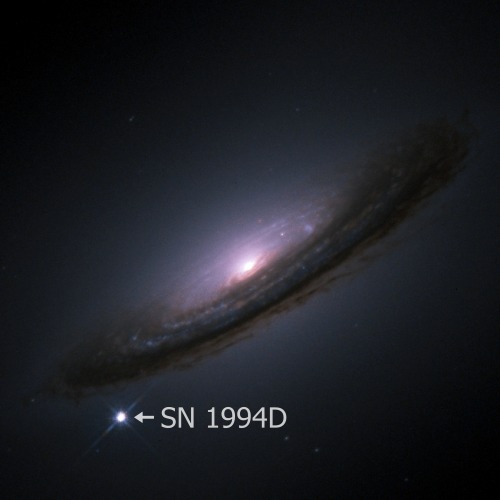
Neutron Stars
If the collapsing stellar core at the center of a supernova contains between about 1.4 and 3 solar masses, the collapse continues until electrons and protons combine to form neutrons, producing a neutron star. Neutron stars are incredibly dense - similar to the density of an atomic nucleus. Because it contains so much mass packed into such a small volume, the gravitation at the surface of a neutron star is immense.
Neutron stars also have powerful magnetic fields which can accelerate atomic particles around its magnetic poles producing powerful beams of radiation. Those beams sweep around like massive searchlight beams as the star rotates. If such a beam is oriented so that it periodically points toward the Earth, we observe it as regular pulses of radiation that occur whenever the magnetic pole sweeps past the line of sight. In this case, the neutron star is known as a pulsar.

Black Holes
If the collapsed stellar core is larger than three solar masses, it collapses completely to form a black hole: an infinitely dense object whose gravity is so strong that nothing can escape its immediate proximity, not even light. Since photons are what our instruments are designed to see, black holes can only be detected indirectly. Indirect observations are possible because the gravitational field of a black hole is so powerful that any nearby material - often the outer layers of a companion star - is caught up and dragged in. As matter spirals into a black hole, it forms a disk that is heated to enormous temperatures, emitting copious quantities of X-rays and Gamma-rays that indicate the presence of the underlying hidden companion.

From the Remains, New Stars Arise
The dust and debris left behind by novae and supernovae eventually blend with the surrounding interstellar gas and dust, enriching it with the heavy elements and chemical compounds produced during stellar death. Eventually, those materials are recycled, providing the building blocks for a new generation of stars and accompanying planetary systems.

Credit and reference: science.nasa.gov
image credit: ESO, NASA, ESA, Hubble
Celebrating Five Years at Jupiter!
We just released new eye-catching posters and backgrounds to celebrate the five-year anniversary of Juno’s orbit insertion at Jupiter in psychedelic style.

On July 4, 2016, our Juno spacecraft arrived at Jupiter on a mission to peer through the gas giant planet’s dense clouds and answer questions about the origins of our solar system. Since its arrival, Juno has provided scientists a treasure trove of data about the planet’s origins, interior structures, atmosphere, and magnetosphere.

Juno is the first mission to observe Jupiter’s deep atmosphere and interior, and will continue to delight with dazzling views of the planet’s colorful clouds and Galilean moons. As it circles Jupiter, Juno provides critical knowledge for understanding the formation of our own solar system, the Jovian system, and the role giant planets play in putting together planetary systems elsewhere.
Get the posters and backgrounds here!
For more on our Juno mission at Jupiter, follow NASA Solar System on Twitter and Facebook.
Make sure to follow us on Tumblr for your regular dose of space!
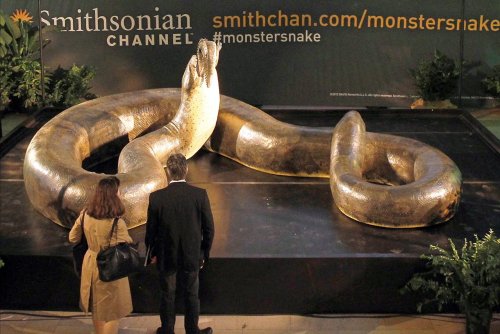

The Titanoboa, is a 48ft long snake dating from around 60-58million years ago. It had a rib cage 2ft wide, allowing it to eat whole crocodiles, and surrounding the ribcage were muscles so powerful that it could crush a rhino. Titanoboa was so big it couldn’t even spend long amounts of time on land, because the force of gravity acting on it would cause it to suffocate under its own weight.
RECORD BREAKERS
Life on earth, as magnificent and versatile as it is, is seemingly tame compared to the weird and wonderful creatures that once existed. All categories of life have reached unimaginable sizes, here are just a selection of prehistoric record breakers!

MEGALODON The biggest shark known to have existed, ruling over the oceans as recently as up to a million years ago. A length of almost 20 metres and weighing in at an estimated 48 tonnes, Megalodon could deliver a crucifying bite of up to 110,000N. It is no surprise that the Megalodon was dubbed the “whale killing shark”.
MEGATHERIUM Our early ancestors would have been quite familiar with Megatherium as they existed up to 8000 years ago, they were in fact the largest sloths to have existed. Sloths have a reputation as being lazy, slow and docile, but Megatherium was a 6 metre long, 4 tonne monster with a killer instinct and knife-like claws. Megatherium’s discovery came before that of the dinosaurs. Skeletons of these prehistoric beasts were a delight to the Victorian public and paved the way for the science of palaeontology.

ARCHELON Literally meaning “large turtle”, Archelon certainly was just that. Existing during the cretaceous, the time of the dinosaurs, Archelon could reach 4.5 metres long and may have lived to over 100 years old. Archelon could not compete with other cretaceous beings in speed and agility, but its blade-like beak was able to slice through flesh and crush though the toughest ammonite shells. Unfortunately Archelon appears to have been a popular snack for other marine dwellers, skeletons are frequently missing flippers or heads and covered in slashes.
TITANOBOA When the dinosaurs reign ended, a new era saw the rise of new super-predators, one was Titanoboa, the largest snake ever with a body up to 13 metres long, standing a metre off the ground and weighing up to 2500 pounds. Titanoboa was 30% longer than even todays largest species. Scientists believe this humongous snake hunted like its modern relatives, the boa constrictors, by winding around prey and suffocating them.

IRISH ELK Owner of the largest antlers of any animal, up to 3 metres wide, the Irish Elk gets its name from its frequent discoveries in Irish peat bogs. Existing up to 10,000 years ago, these would have been a common sight in grasslands for our ancestors. Many fossils indicate the animals died of starvation which is why the antlers are thought to have been part of elaborate mating contests between males, often resulting in one being fatally injured and unable to feed itself.
DEINOTHERIUM A distant relative of the elephants and mammoths, Deinotherium was more sinister, its name translates to “terrible beast”, they would have most likely caused trouble for our ancient ancestors around 1.5 million years ago. Deinotherium is actually considered to be the second largest land mammal of all time, behind Paraceratherium and is iconic in appearance due to its sharp, downward facing tusks.
ARCTODUS Known as the short faced bear, they were the biggest bears on record and one of the largest mammal carnivores to have existed. Whilst their skull was short, they were packed with piercing teeth that could deliver a bone crushing bite. Existing up to 11,000 years ago, out ancestors would have stayed well clear of this 900 kilogram predator, with slender limbs and knife-like claws, Arctodus was deadly.

SARCOSUCHUS One of the most infamous fossil discoveries in history, Sarcosuchus was the largest crocodile to walk the Earth up to 112 million years ago, this was a crocodile capable of killing dinosaurs. Sarcosuchus was twice as long as a saltwater crocodile, that’s 11-12 metres long and could reach over 8 tonnes. Its jaw was packed full of 66 teeth either side of its jaw and would have clamped down on prey that wandered too near.
ARGENTINOSAURUS One of the largest lifeforms that has ever stood on the Earth, Argentinosaurus could grow up to 30 metres long with its hind limbs standing 4.5 metres off the ground. They existed between 97-94 million years ago and at adulthood would have been virtually indestructible to predators. Its weight is estimated at a staggering 80-100 tonnes. There hasn’t been another land mammal on the same scale as Argentinosaurus since and it’s unlikely there ever will be.

SPINOSAURUS The largest discovered therapod ever, a group that includes Allosaurus and Tryrannosaurus. Spinosaurus remained an enigma to scientists for decades, the only discovered specimen was sadly destroyed during World War 2 and was not rediscovered until the 21st century. Spinosaurus is thought to have reached up to 16 metres long and weighed in around 12 tonnes, that is almost double the weight of a T-rex!

Wow, it’s Friday! Have a great weekend.
Dunkleosteus model featured in ep. 12 of Shelf Life: 6 Extinctions in 6 Minutes.
-
 buddahman liked this · 3 months ago
buddahman liked this · 3 months ago -
 charliesian reblogged this · 4 months ago
charliesian reblogged this · 4 months ago -
 eveeyehorizons liked this · 5 months ago
eveeyehorizons liked this · 5 months ago -
 shotofstress reblogged this · 7 months ago
shotofstress reblogged this · 7 months ago -
 thatmoirevibration reblogged this · 10 months ago
thatmoirevibration reblogged this · 10 months ago -
 hellonursevenus reblogged this · 10 months ago
hellonursevenus reblogged this · 10 months ago -
 hellonursevenus liked this · 11 months ago
hellonursevenus liked this · 11 months ago -
 varginhamonologues reblogged this · 1 year ago
varginhamonologues reblogged this · 1 year ago -
 vicissitudeislove liked this · 1 year ago
vicissitudeislove liked this · 1 year ago -
 bigbzworld liked this · 1 year ago
bigbzworld liked this · 1 year ago -
 fall-and-shadows liked this · 1 year ago
fall-and-shadows liked this · 1 year ago -
 varginhamonologues liked this · 1 year ago
varginhamonologues liked this · 1 year ago -
 vermilionvexation liked this · 1 year ago
vermilionvexation liked this · 1 year ago -
 a-grief-observed reblogged this · 1 year ago
a-grief-observed reblogged this · 1 year ago -
 deadlysunlight reblogged this · 1 year ago
deadlysunlight reblogged this · 1 year ago -
 diotermotice liked this · 1 year ago
diotermotice liked this · 1 year ago -
 mypixelstories liked this · 1 year ago
mypixelstories liked this · 1 year ago -
 umbra-life reblogged this · 1 year ago
umbra-life reblogged this · 1 year ago -
 buypithetin liked this · 1 year ago
buypithetin liked this · 1 year ago -
 5150juanfer reblogged this · 1 year ago
5150juanfer reblogged this · 1 year ago -
 theshadowline liked this · 1 year ago
theshadowline liked this · 1 year ago -
 aroundtheseparts liked this · 2 years ago
aroundtheseparts liked this · 2 years ago -
 daddyslilhorror reblogged this · 2 years ago
daddyslilhorror reblogged this · 2 years ago -
 2880cjk liked this · 2 years ago
2880cjk liked this · 2 years ago -
 joecare4 liked this · 2 years ago
joecare4 liked this · 2 years ago -
 all11is11one reblogged this · 2 years ago
all11is11one reblogged this · 2 years ago -
 umbra-life reblogged this · 2 years ago
umbra-life reblogged this · 2 years ago

Amateur astronomer, owns a telescope. This is a side blog to satiate my science-y cravings! I haven't yet mustered the courage to put up my personal astro-stuff here. Main blog : @an-abyss-called-life
212 posts
